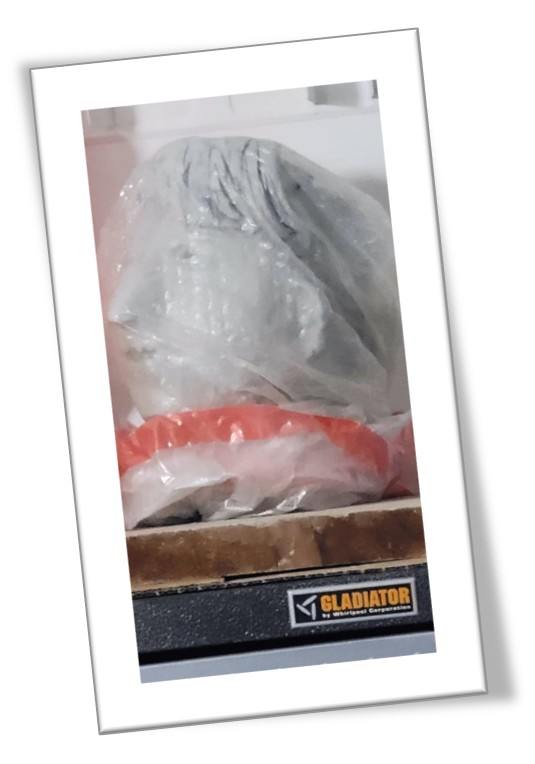healing through creation: how art and metaphor help us mend
Creativity in Life’s Valleys
The other day, I found myself lying in my garage after a walk, stretching beside shelves of old tools and forgotten projects. My gaze wandered upward until I noticed the one unfinished sculpture that I had started five years ago. Layers of dust and plastic clung to its surface, and the project—though incomplete—seemed to hold something unspoken. As I stared at it longer, it dawned on me that this sculpture represented one of my greatest losses in life. When I started, I never intended for it to carry that kind of symbolism, but there it was, staring at me in all its unfinished glory.
That moment lingered in my mind. It got me thinking about how art, poetry, music, writing, storytelling, and even metaphor-making have been a part of the healing and mending ebb and flow throughout my life. There’s something about the act of creating, especially in seasons of transition, sorrow, and loss, that has brought God’s balm of comfort and transformation to my heart. It’s as if, in creating, I am partnering with Him in the quiet, unseen work of repair.

The Healing Power of Creation
Throughout Scripture, we see God as the ultimate Creator. From the beauty of the heavens to the intimacy of humanity’s design, His hand is evident in all things. Genesis opens with a resounding declaration: “In the beginning, God created…” (Genesis 1:1). Creation is foundational to God’s nature, and as beings made in His image, we are invited into that creative process.
Art, in all its forms, has an uncanny ability to reach where words often fail. When we face life’s sorrows—unmet dreams, broken relationships, or the slow erosion of identity—creation gives us a way to process, to lament, and to hope. The unfinished sculpture in my garage was a silent witness to the losses that have shaped my values and life’s work. What once began as an act of creative play had transformed into something deeper: a reflection of a struggle transformed, but also a pathway for healing.
Why Creativity Matters in Times of Pain
In seasons of heartbreak, many of us are tempted to retreat. Grief can feel isolating, and loss often comes with a silence that seems impossible to fill. But creativity offers an invitation—not to fix or solve what’s broken, but to sit with it, to shape it, and to encounter God through it.
Here are a few ways creativity intersects with healing:
- Expression: Art allows us to externalize what we hold internally. David’s psalms are a testament to this, songs that capture agony and joy, doubt, and trust. Whether through journaling, painting, or composing, we give ourselves permission to feel and express ourselves.
- Reflection: The act of creating slows us down. It invites us to notice what we might otherwise overlook. In shaping clay or crafting words, we often stumble upon truths that were hidden in plain sight.
- Connection: Creativity is not just about the end product; it’s about the process. When we create, we align ourselves with the Creator. It becomes a sacred space where His Spirit can work, whisper, and mend.
- Hope: To create something new is to declare that life is not over. Even in the face of sorrow, creativity is a quiet defiance—a reminder that beauty can rise from ashes.
Art as a Companion in Life’s Valleys
As I’ve reflected on my unfinished sculpture, I’ve realized it’s not the only instance where art has walked beside me in life’s valleys. Time and again, I’ve turned to creative outlets to navigate transitions, losses, and pain. There were seasons when a poem captured what my tongue could not, when colors on a canvas spoke more than words, or when a journal entry became a prayer.
These acts of creation became an offering—not just to me but to God. They were a way of saying, “Here I am, Lord, in all my brokenness. Will You meet me here?” And time after time, He did. He met me in the brushstrokes, in the ink, in the raw imperfection of it all.
Metaphors and the Language of the Soul
Carl Jung once said, “The soul speaks in images, not logic.” This rings true in the way metaphors help us make sense of life’s complexities. The sculpture, for example, was not just an art piece; it became a symbol of my past and present grief, unfinished yet full of meaning. Perhaps this is why Jesus taught in parables—stories and images that spoke to the heart as much as the mind.
When we create or engage in metaphor-making, we are participating in this divine language. We are saying, “This story, this image, this song—it reflects something in me, something I may not fully understand yet.” Through this process, God often reveals truths that logic alone cannot reach.
Practical Steps for Embracing Creativity in Healing
If you are walking through a season of sorrow or transition, consider inviting creativity into your process. Here are a few practical steps:
1. Start Small
You don’t need to be an artist to benefit from creativity. Begin with what feels accessible—a notebook for journaling, crayons for sketching, or even a playlist of songs that resonate with your emotions.
2. Create Without Judgment
The goal isn’t perfection. Your work doesn’t need to be shared or praised. Let it be messy, raw, and unfinished. Remember, it’s about the process, not the product.
3. Invite God into the Process
Pray as you create. Ask God to meet you in the act of shaping, molding, or writing. Trust that He is present, even in the small and quiet moments.
4. Reflect on What Emerges
After creating, take a moment to reflect. What feelings surfaced? What truths became clearer? Journal about the experience or share it with a trusted friend or counselor.
5. Return to It
Healing is not linear. Some days, creating may feel impossible; on others, it may feel like a lifeline. Keep returning to it as you are able, trusting that God’s grace is sufficient for every step.
Conclusion: Partnering with the Creator
The unfinished sculpture in my garage remains just that: unfinished. Yet, I no longer see it as a failure or an abandoned project. Instead, it has become a symbol of God’s ongoing work in my life. Like the sculpture, I am a work in progress, shaped by His hands, mended by His grace.
If you find yourself in a season of loss, I encourage you to pick up a pen, a brush, or even a simple metaphor. Let creativity be a companion in your healing. Let it remind you that you are not alone, that the Creator is with you, and that He is making all things new, even you.
 John Pierce been counseling and leading groups at The Barnabas Center since 1997. He earned a bachelor’s degree in psychology from William Jennings Bryan College and a master’s degree in Biblical counseling from Colorado Christian University. John is a Nationally Certified Counselor (NCC), Licensed Clinical Mental Health Counselor in North Carolina (LCMHCS), a Certified Sexual Addiction Therapist (CSAT), and a Certified Multiple Addictions Therapist. He serves as the Clinical Director for the Center and oversees the Honors Program, a multi-faceted group-based course for men seeking sexual health, freedom from addictions, and intimacy growth. John is married to Sandy and they enjoy their three adult children and two grandchildren. He loves to learn, collect quotes, and create, particularly when it involves sculpting with clay.
John Pierce been counseling and leading groups at The Barnabas Center since 1997. He earned a bachelor’s degree in psychology from William Jennings Bryan College and a master’s degree in Biblical counseling from Colorado Christian University. John is a Nationally Certified Counselor (NCC), Licensed Clinical Mental Health Counselor in North Carolina (LCMHCS), a Certified Sexual Addiction Therapist (CSAT), and a Certified Multiple Addictions Therapist. He serves as the Clinical Director for the Center and oversees the Honors Program, a multi-faceted group-based course for men seeking sexual health, freedom from addictions, and intimacy growth. John is married to Sandy and they enjoy their three adult children and two grandchildren. He loves to learn, collect quotes, and create, particularly when it involves sculpting with clay.





